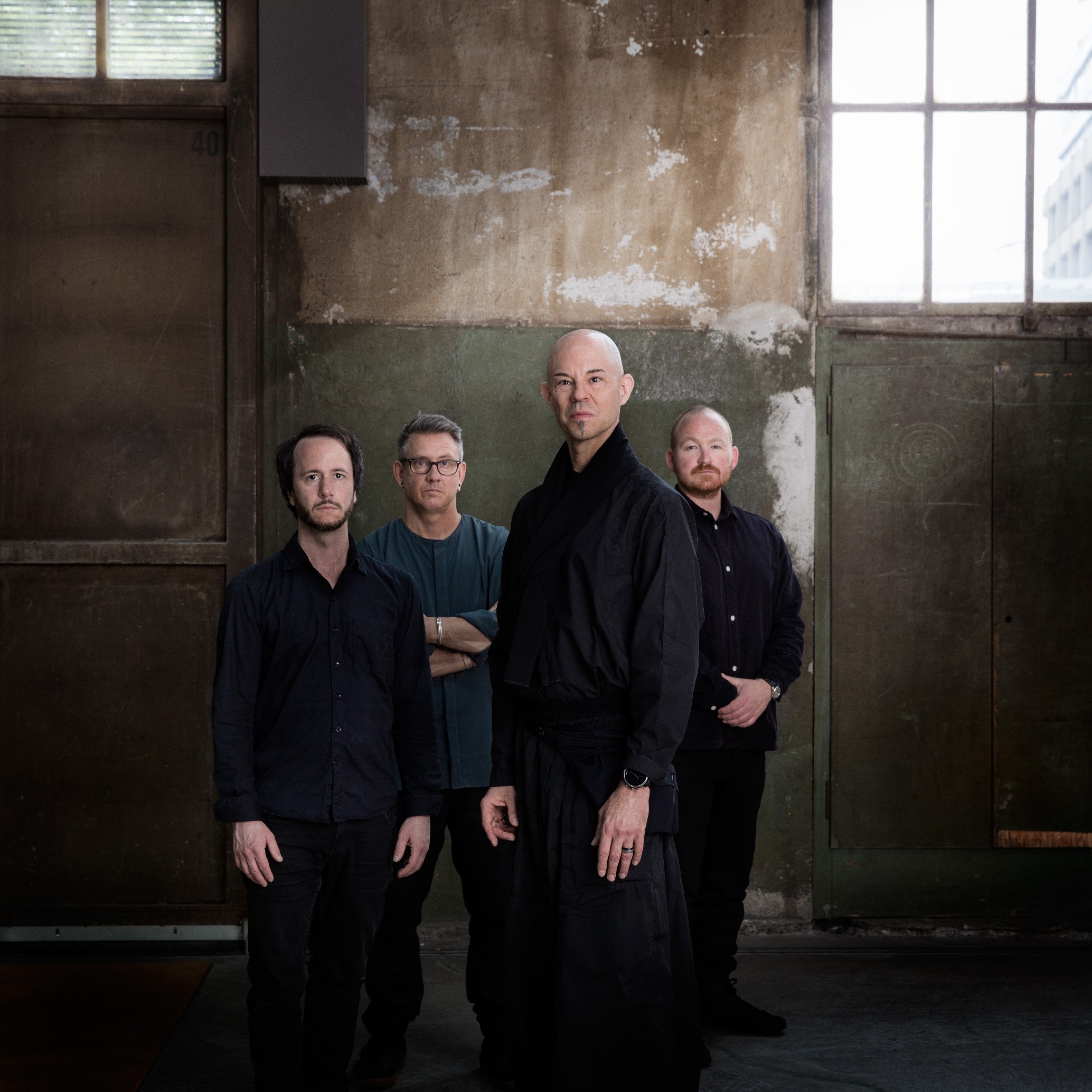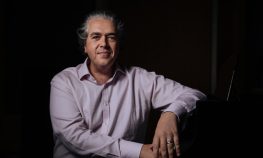NIK BÄRTSCH’S RONIN

- Website
- Contact: Julie Allison - julie@riotsquadpublicity.com
Album Title Spin
Film Title ‘Ingredients For Disaster’
Release Date 29 November 2024
In November 2004, 20 years ago, Swiss pianist, composer and bandleader Nik Bärtsch began his Monday club nights, first at Bazillus, then at Exil in Zurich. Performing weekly with his band Ronin (now streamed to a global audience), the club became its testing ground, developing their sound and genre-defying musical compositions while nurturing their extraordinary group empathy. Ronin are master craftsman, weaving together layers of rhythm, melody, and texture into a driving, hypnotic sonic experience. It’s a sound that Nik Bärtsch calls Zen Funk.
Coinciding with this remarkable anniversary is the release of SPIN, Ronin’s 9th recording since their formation in 2001. It is the first with new bass player, Jeremias Keller, the first on Bartsch’s independent label, Ronin Rhythm Records (his previous albums are all released on ECM) and with it a new direction.
Accompanying SPIN is Ingredients For Disaster, a compelling documentary film that combines rousing live performance, beautiful imagery, revealing interviews and spectacular computer graphics inviting audiences to immerse themselves in the spellbinding world of Nik Bärtsch. Created by BAFTA and Emmy winner Julian Phillips, the film takes the viewer on a journey through the limitless possibilities of sound and rhythm and unflinching creative endeavour. From Stravinsky to John Cage to Thelonious Monk to James Brown it vividly brings to life the musical journey and intricate complexities of Ronin’s music.
The Ronin sound is based on intricate patterns, repeating cycles, refined beats and intense groove. It’s where minimalism meets funk. In Ingredients For Disaster, Bärtsch sits spinning his Rubik’s Cube and explains, “It’s like this focus, clearness, simplicity, reduction, but on the other hand, also the groove, the playfulness, the sensuality, the dance”. When combined, “you suddenly see that these different musical energies actually match in a wonderful way”. Also in the film, UK music critic, Stuart Nicholson recalls that after seeing an early live performance, “something different was going on, something which was new and original. The music itself breaks down very easily into three separate constituencies; rhythm, melody and harmony. The main constituent in Nick’s music was rhythm. Melody was fairly minimal and harmony was fairly static, and those are the basic ingredients for disaster! But what we had here was a highly successful, well-thought-out program of music”.
Released on 29 November, SPIN looks both to the past and future. Alongside new member Keller, Bärtsch is joined by long-time Ronin associates Sha on bass clarinet and alto saxophone and Kaspar Rast on drums. Spin combines new pieces, Modul 63 and Modul 66 with older material, Modul 70_51, Modul 14 and Modul 23 with new arrangements and interpretations.
The Ronin sound remains, playful with a sense of freedom within its clear structures. The band’s attention to chamber music-like details—blending, ghost notes, and micro phrasings—continues to bring freshness to their performances. What’s new is a more compact sound , creating subtle alignments with indie, post-rock, and ambient pop. The album reflects the true Ronin spirit, fully focused on the music and its audience. All tracks were recorded live, staying faithful to the band’s credo of “handmade groove quality”.
Modul 14, available to download today, was first introduced on Ronin’s debut album Randori (2002). Although transformed in form, sound, and direction, it retains its original 2×7/4 beat, bass line, and unique one-note repeating theme. It showcases the group’s creative synergy and highlights Rast’s masterful development of dynamic drum patterns with refined breakbeats.
Modul 14 is a firm favourite for clubbers and DJs. Indeed, in Ingredients For Disaster, we see Ronin at the 2023 Houghton Festival, the electronic music haven. Amongst the heady sounds and dancing festival-goers, they muse on their diverse audience. “I see many similarities between electronic music … it’s a lot of repetition. Our music similar” says Keller. Sha adds, “There are ones who want to count and just get the complexity of this thing, like, “ah, it’s so complex, it must be good”. And there are other people who don’t give a whatever about that. They just hear the grooves and they just want to move to it”








